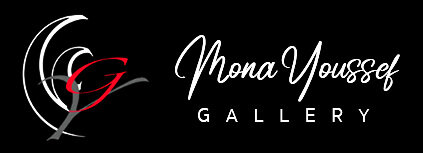COVID-19 and creativity
When we are under pressure with certain amount of it, can help to perform better, keep us watchful and enable us to avoid vulnerability. Too much of pressure has physical effects such as, headaches, higher blood pressure, chest pain, upset stomach and difficulties sleeping. The emotional effects include depression and anxiety. How about Our brains functionality when under pressure? Naturally, our right and left hemispheres, which perceive the world with different perspectives, yet together work very well. Under pressure, we focus more on what it is we need the most to achieve which activate our left side more. When we most need concentration to focus, our brain responds allowing the logical and analytical side to question and take charge. However, it is the creative right side of the brain, that permits us to see the bigger picture. Without the right hemisphere, we are unable to realize new and original answers to move forward. The result is we struggle with problem solving due to an inability to think of many of ideas and solutions. We become unable to see what is need as first step and limiting ourselves which block innovation. It is suggested that when we find difficulties finding solution, take a break from the problem for a short time by stop thinking about it so hard, as it is said “put it on the back burner and do something else. This is to give the right hemisphere some space to widen out some other perspectives to become creative.
Remember, relaxation what helped Archimedes to work it out as to how measure volume. Only when he went for a relaxing soak in the bath, he was able to solve the problem and came up with his discovery of the relation between the surface and volume of a sphere and its circumscribing cylinder. Early, Archimedes spent some time of his career in Egypt. I wonder if this had an effect on his creative thinking abilities? Edward de Bono is considered as the leading international authority in creative thinking had spent more than 50 years of research on creativity. In his book ‘Serious Creativity’ he coined on the sources of creativity and whether we are born with it or can be taught! Defining creativity is that we all have perceptions, concepts, and boundaries and creativity is about challenging these. Creativity is about breaking patterns and giving us an substitute approach to logical thinking in pursuit of solving problems. With creativity, we move beyond what is and into what could be. Edward de Bono disagreed with the misconceptions of what creativity is such as "Creativity is something you're born with; it can't be learned.", "You have to be artistic to be creative.", "Creativity is crazy and illogical.", "Creativity requires particular conditions.". He believes that eliminating certain conditions, can make one more comfortable to become creative. Creativity takes thinking out of the reasonable norm and pushes the boundaries.
There are ingredients invite creativity such as:
Not knowing certain constrain in a given situation or freeing oneself from unnecessary restrictions. In another words, keeping innocence to find its way, to be creative and come up with something novel.
Having experience contribute to creativity when one recalls it to build on, turns it around or edits it to create something new. This process requires motivation to be willing to spend time and efforts to create something new from a previous idea. Creativity also requires courage and being free from the fear of making mistakes or trying new things for we do lean from mistakes or experiences. In some case, mistakes led to creating most advances we need in life such as, the first antibiotic (This phenomenon has long been known; it may explain why the ancient Egyptians had the practice of applying a poultice of moldy bread to infected wounds. But it was not until 1928 that penicillin, the first true antibiotic, was discovered by Alexander Fleming, Professor of Bacteriology at St. Mary's Hospital in London. Penicillin was also very difficult to isolate and purify, until the late 1930s. How immunology was discovered?1798 Edward Jenner initiated smallpox vaccination. In 1877, Paul Erlich recognized mast cells. In 1879, Louis Pasteur developed an attenuated chicken cholera vaccine. As well Columbus when was heading to the Indies and the list goes on.
Back to COVID-19 and creativity, this present situation have motivated many to think out of the box as how to communicate in new ways, how to help others without seeing them, searching for ways to resist the virus and create a vaccine, many artists are finding new ways to sell their artwork, and others are using this time to spend more time creating artwork.
Afterall, under pressure, creativity thrives, so let us think out of the box and look at the bright side. I would not mention the new ways scammers found to scam all, so please stay safe, healthy, wise and be creative.
